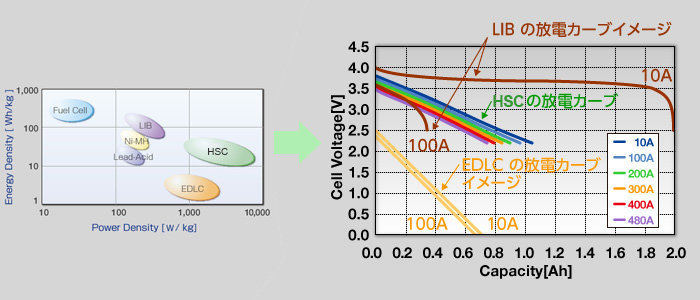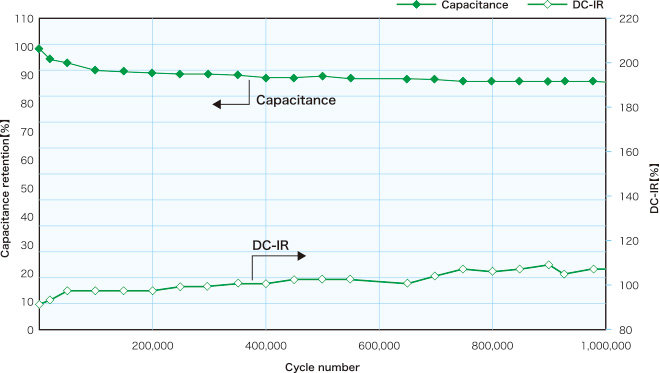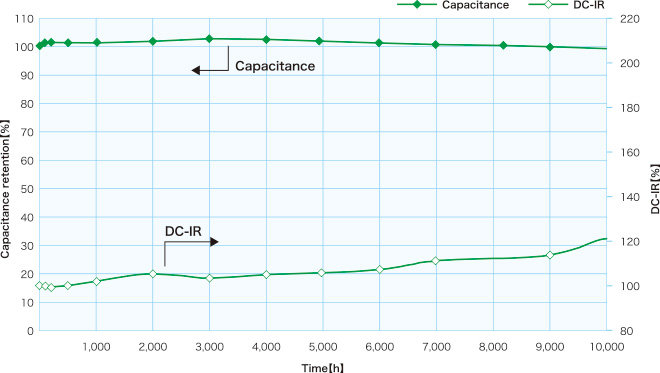Characteristics of Hybrid Super Capacitor
Both high power density and high energy density are compatible
HSC uses activated carbon similar to the electrical double layer capacitor for the positive electrode and carbon material similar to the lithium ion battery for the negative electrode, but with its unique design of pre-doping lithium ions, it achieves both high power density and energy density It is a next generation storage device.

Even if discharging with a large current of 480 A, high capacitance can be obtained.
| Test product | Prismatic cell 2300F |
|---|---|
| Test conditions | Charge: CCCV 10A, 3.8V, 30min / Discharge:CC 10~480A, 2.2V |
Long life
HSC can be used at higher cell voltages than electrical double layer capacitors and has excellent durability for high temperature. This is because the pre-doped material is selected as the negative electrode, and not only the peak potential of the positive electrode is lowered, but also the deterioration of the negative electrode is suppressed at the same time. Due to these careful designs, our products have achieved high durability and high number of repeated cycle charging and discharging.

After 800 thousand cycles have elapsed, no noticeable deterioration is seen.
| Test product | Laminate cell 1100F |
|---|---|
| Test conditions | Charge: CCCV 10A, 3.8V / Discharge:CC 100, 2.2V/ No pause |

After 8,000 hours, no noticeable deterioration is seen
| Test product | Laminate cell 1100F |
|---|---|
| Test conditions | Applied voltage: 3.8 V / ambient temperature: 70℃ |
Excellent safety
In lithium ion batteries, metal oxides are used in the positive electrode, and when the cell temperature rises in the event of an abnormality, oxygen is released by thermal decomposition of the positive electrode, possibly causing a thermal runaway reaction. On the other hand, since HSC uses activated carbon for the positive electrode, even if there is a fever due to a short circuit at the time of abnormality, but there is no thermal runaway reaction because of lack of oxygen and it has excellent safety.
| Test | Condition | Result | |
|---|---|---|---|
| Ignition | Rupture | ||
| Overcharge | Current: 200 A Charge rate: 250% Maximum voltage: 20 V Using narrow jig |
None | None |
| Over discharge | Current: 200 A Voltage: 0 V |
None | None |
| External short circuit | Short circuit resistance: 3 mΩ Atmosphere temperature: 55 ℃ |
None | None |
* These test results are observed under the test conditions described and do not guarantee similar results under different conditions.
